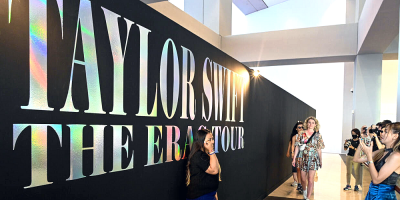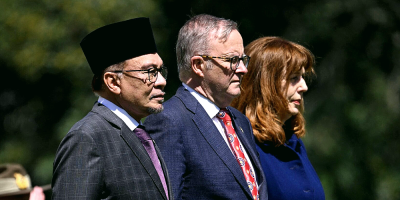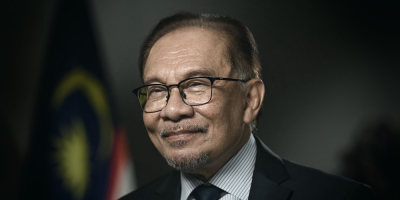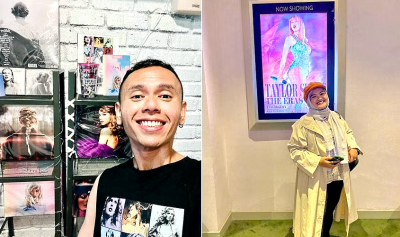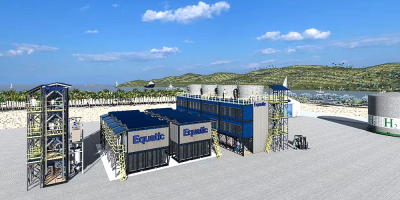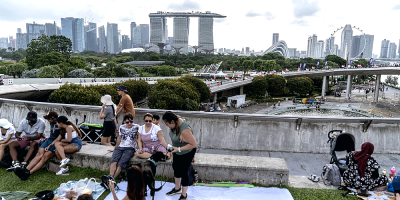We do not actually need to look any further than Singapore for a role model to emulate.
On Monday, Prime Minister Datuk Seri Anwar Ibrahim visited Singapore at the invitation of his counterpart Lee Hsien Loong.
That was Anwar’s third official visit after assuming office last November — On January 8, he visited Indonesia, followed by a visit to Brunei on January 24 and Singapore on January 30 — all within a span of only three weeks.
No thanks to the coronavirus pandemic, for three whole years leaders of the ten Asean countries only managed to make sporadic visits to one another.
Over here in Malaysia, because of domestic political turmoil, there was a lack of consistency in the policies of our three prime ministers over those three years, rendering the promises our leaders made to their regional counterparts unsustainable.
As such, Anwar Ibrahim is now tasked with two major missions after taking over the premiership: to stabilize the political situation of the country as well as economy and the people’s living; and to fortify our relationship with our nearest neighbors.
Singapore is our second largest trading partner after China, with bilateral trade topping RM367.53 billion last year, or 12.9% of our total external trade of RM2,848.4 billion.
Meanwhile, UN statistics show that Malaysians make up 44% of foreigners working and living in Singapore, making our country the tiny city-state’s biggest foreign manpower supplier.
And the number of people traveling between the two countries via the Johor Causeway or the Second Link could be in hundreds of millions each year!
Because of such a close-knit relationship, maintaining a mutually beneficial connection appears to be the only viable win-win strategy for both countries.
As PM Anwar has said, Malaysia needs to maintain a cordial relationship with Singapore for the tremendous benefits of both our countries.
We must come to terms with the reality that it is utterly essential for us to reinforce mutual cooperation in all areas in order to maximize the synergistic effect to spearhead our economic development more efficiently.

Anwar touched down on Singapore at 9.40 a.m. Monday morning to start his one-day visit to the Lion City which would include a courtesy call to Singapore President Halimah Yacob, a meeting with PM Lee Hsien Loong, and witnessing the signing ceremony of three agreements to promote cooperation in digital and green economy, among other things.
It is believed that under the new cooperation framework, new growth opportunities will be created to benefit the people and companies on both sides of the Causeway.
At the Istana, PM Lee and his wife also witnessed the naming ceremony of a hybrid orchid species named after their Malaysian guests, Dendrobium Anwar Azizah.
In the meantime, foreign minister Zambry Abdul Kadir said all discussed issues related to maritime boundary and flight information region would not lean towards any side but through amicable negotiations for mutual benefits.
Indeed, given the symbiotic relations between the two countries, zero-sum game will only hurt both sides.
The other members in the Malaysian delegation included transport minister Anthony Loke, international trade and industry minister Tengku Zafrul Tengku Abdul Aziz, and communications and digital minister Ahmad Fahmi Mohamed Fadzil.
Despite the short duration of the visit, arrangements have been made for a meeting with Malaysians living in Singapore, which is expected to touch on urgent matters related to the people’s living.
Firstly, the congestion at Johor Causeway and the Second Link.
During the peak traveling times in this CNY festive season, for instance, it is very common for the Malaysian customs to be jammed up for up to six to eight hours.
By right we should have posted more officials at immigration counters to serve the people, but many have gone on festive leave instead!
The prime minister has instructed the immigration department to increase the number of officials on duty during festive seasons to ease the severe congestion issue.
Secondly, the JB-Singapore Rapid Transit System (RTS) project slated for completion end-2026 was 24% complete as of last December, while the Iskandar Rapid Transit (IRT) was 23.98% complete.
Upon completion of these two major infrastructure projects, the severe traffic congestion at the Johor customs and JB city center should be significantly relieved. But this will only become a reality four years later.
As such, it is imperative that the construction of these two projects be expedited while efficiency of immigration personnel at the checkpoint boosted concurrently to tackle the rising demand.
Thirdly, leaders of the two countries will need to seriously consider reinstating the stalled KL-Singapore high speed rail project.
KLIA is located too far from downtown Kuala Lumpur, and given the extra time of traveling between the city and airport, coupled with waiting time at the airport, it is difficult for business or leisure travelers to make a same-day trip between the two capital cities.
The most worrying problem in the KL-Singapore HSR project is the corruption black hole. However, if all tenders can be carried out in complete transparency and openness, this massive infrastructure project should remarkably boost the development of relevant industries in the country, transfer of technology, and creation of new job opportunities.
As a matter of fact, we do not need to look any further than Singapore for a role model to emulate, and we believe PM Anwar’s visit to our nearest neighbor down south would be a very fruitful one.
ADVERTISEMENT
ADVERTISEMENT






